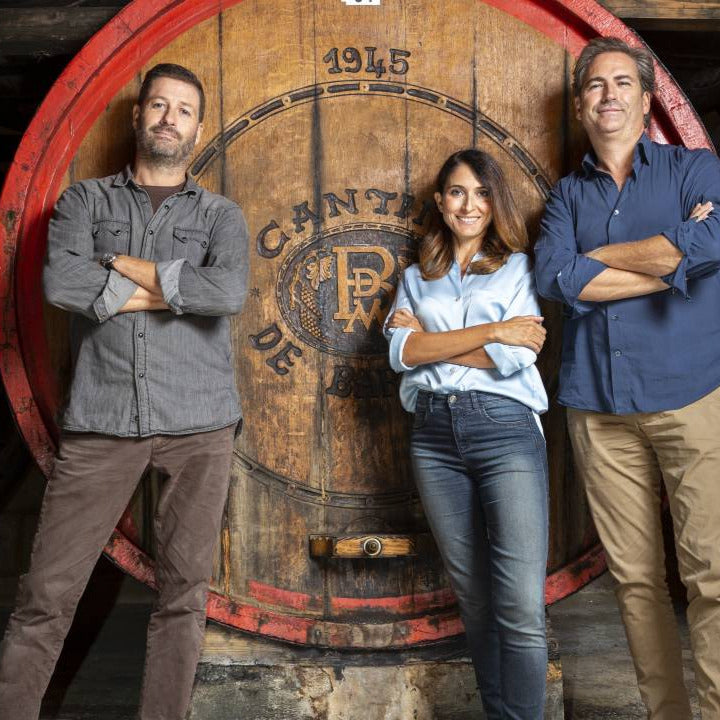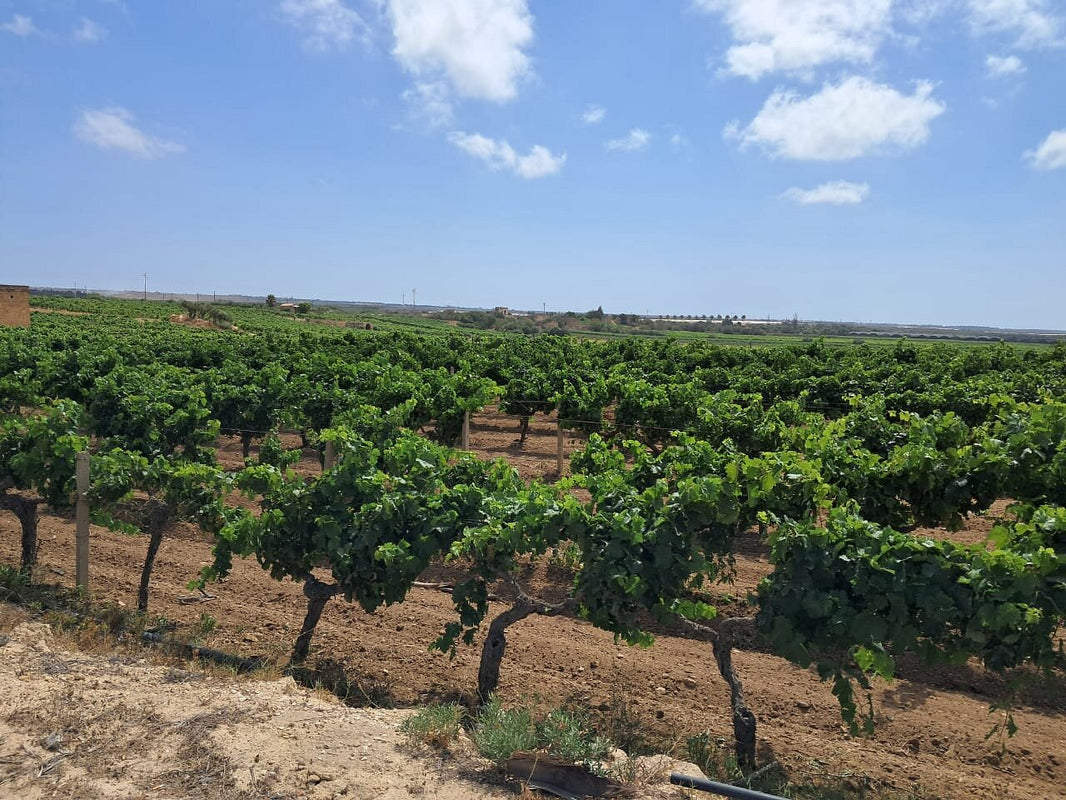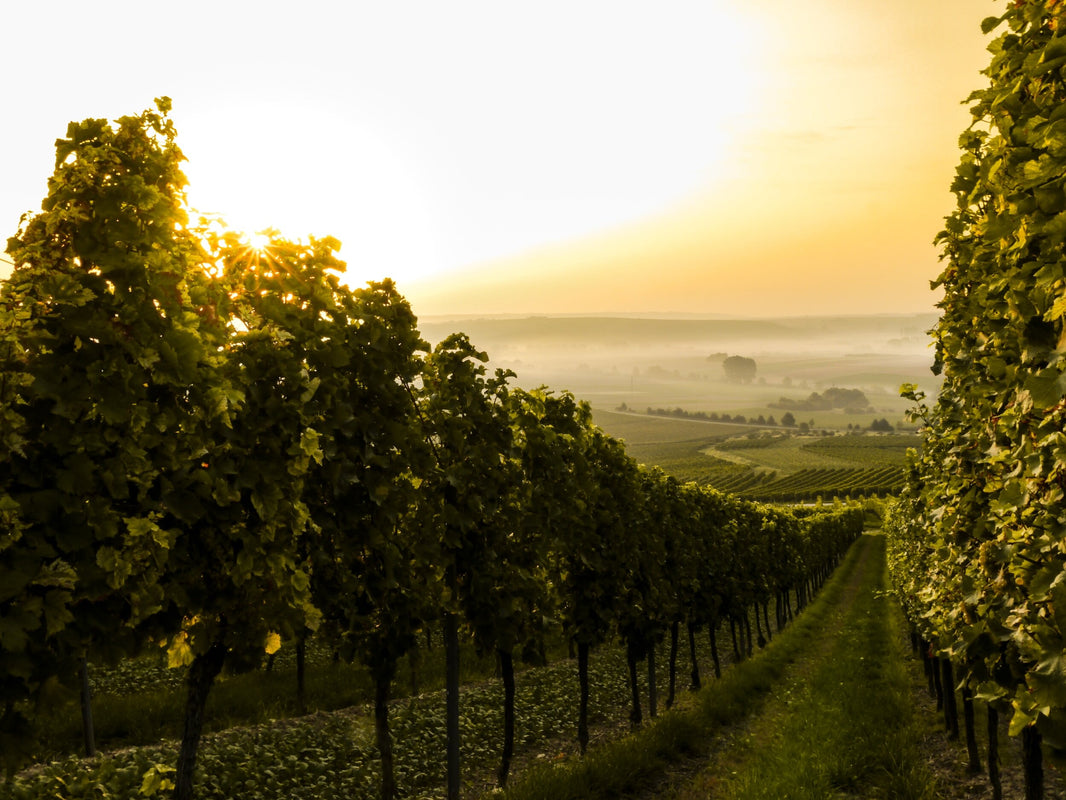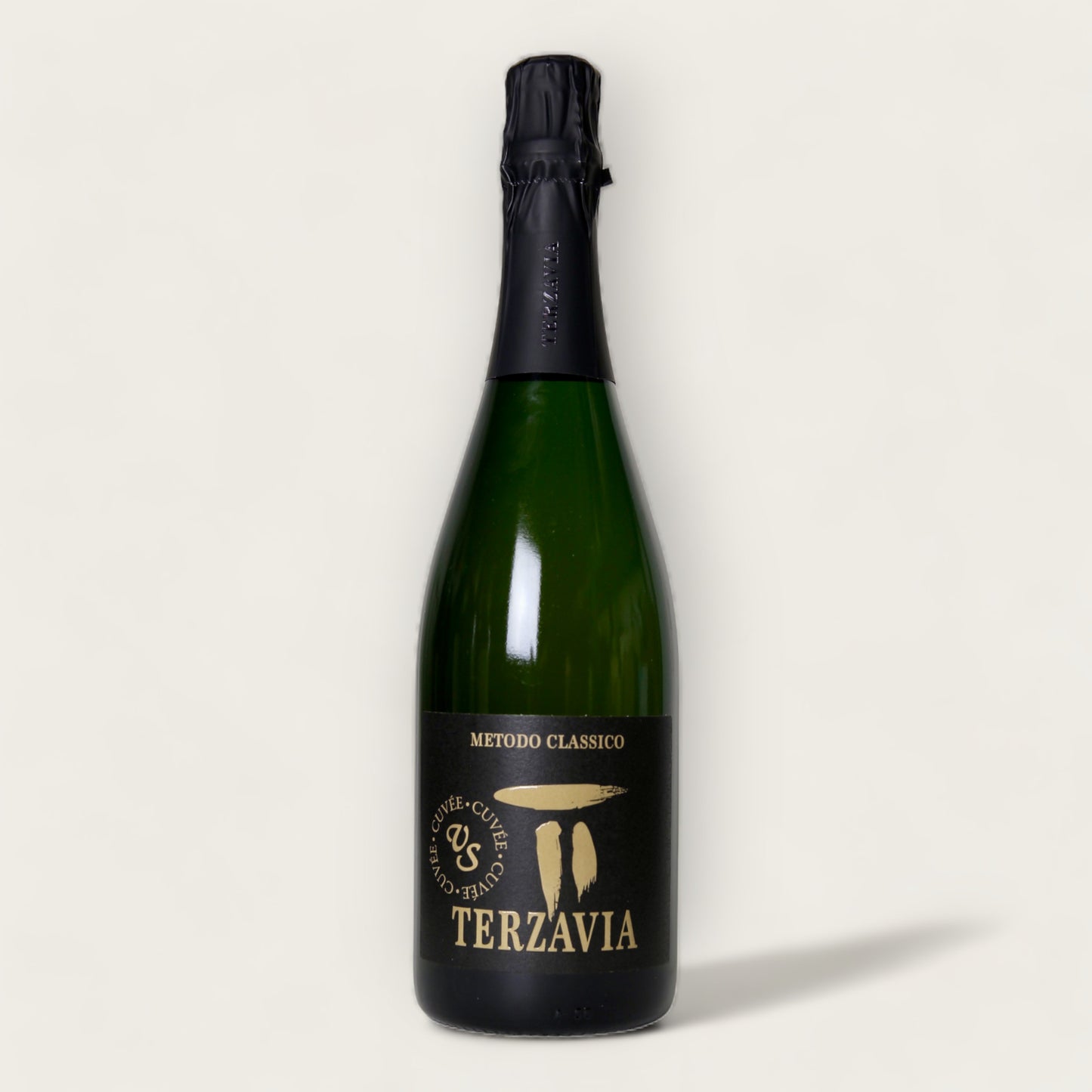Stay up-to-date with the latest news, exclusive promotions, and exciting events by subscribing to our newsletter! Sign up now and receive a 10% discount on your first purchase. Don't miss out on this great opportunity to stay connected with us and get access to special offers!
Terzavia Metodo Classico Extra Brut - Non Vintage
- Tax included.
"Terzavia," meaning "the third way," is an interpretation of Grillo that represents the tradition of an evolving territory, highlighting unexplored characteristics so far. It combines French tradition (Methode Champenoise) with a strong Sicilian personality. Grillo, a variety that continues to amaze with its versatility and strength in this "third way," is used to create a traditional method sparkling wine, expressing a land highly suited to great wines.
100% Grillo harvested starting the second-third week of August. The clusters are manually selected, and the grapes are cooled. A direct soft pressing of the whole clusters follows, and after a natural decanting of the must, fermentation starts in stainless steel tanks. For only 20% of the grapes, fermentation continues in French oak barrels at a controlled temperature (air conditioning). The fermentation is activated by wild yeasts with a minimum use of sulfites. Tirage with fresh must, instead of sugar, is added in such quantities as to dilute alcohol content and to add a dose of (natural) sugar suitable for the second fermentation. Sugar contribution does not exceed 15%. After tirage, the wine spends at least 18 months in the bottle, always on its own lees. Pas dosé.
Grape Variety:
Alcohol: 12.0%
Serving Termperature °C: 8-10°C
Ageing Potential: 10-15 years
Terroir: Samperi - Marsala

Marco De Bartoli

Samperi - Marsala

Sicilia


